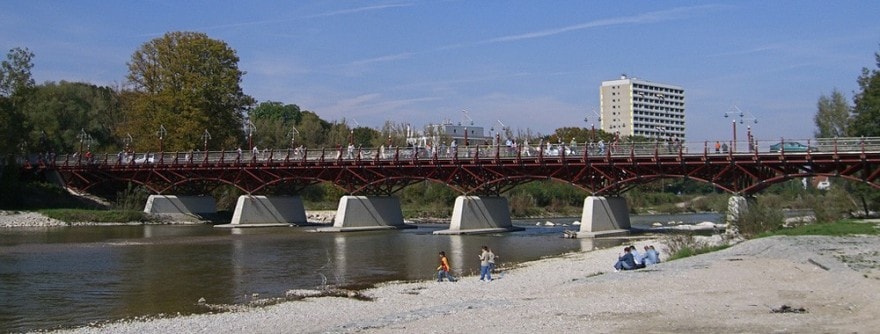Thalkirchen

The beautiful coastal meadows of the Isar with numerous bathing places, paths for hiking, the historic center, preserved since the Middle Ages – this is the combination that attracts to this area of Munich and makes it so popular. Here on one of the Isar piers is the terminus of the much loved Isar-Flosfahren rafting trip.
Together with Oberzendling, Fürstenried, Forstenried and Solnen, Talkirchen forms Munich’s 19th urban district. According to statistics 91,412 people currently live on an area of 1,776.84 hectares. Munich’s 19th urban district is thus the third largest in the Bavarian capital. In contrast to Oberzendling, Talkirchen has not become a large industrial district, but it plays an important role in Munich’s tourism industry.
The first historical information about the village of Talkirchen dates back to 1268. The village was primarily a meeting place for Catholic pilgrims from all over Europe who sought out St. Mary’s Church. More and more famous citizens, such as the painter Cosmas Damian Azam, bought houses in Thalkirchen. On January 1, 1900, the considerably enlarged village officially became part of the city of Munich, part of its community, and in 1904 a bridge over the Isar connected the districts of Harlachting and Talkirchen.
It is worth saying that perhaps in no other district of Munich do you get as close to nature as in the tranquil Thalkirchen. The coastal meadows of the Isar invite you to relax and the Hinterbrühler lake and the Maria Einsiedel natural baths offer tempting opportunities to swim on a hot summer day. Talkirchen is also famous for the water station, where tourists and locals alike go ashore for a spectacular rafting trip on the Isar.
In the historic center of the area around St. Mary’s Church, holidaymakers hungry for food can satisfy their hunger in the numerous restaurants of Talkirchen, which retain their rustic charm. Those who like to enjoy their vacations independently of hotels and pensions are familiar with the campsite near Isar, where every year those who choose to stay come every year.
Not only do the residents of the area enjoy great weekend getaways and relaxing evenings away from home, the area also has a great infrastructure and many activities for families with children. In total, the 19-city area has 72 childcare facilities, 9 elementary schools and 3 high schools. In addition, there are 2 real schools, 2 gymnasiums, a comprehensive school and 5 vocational schools.
Obersendling
![]()
There is no other neighborhood in Munich that was created solely through the efforts of a single company. The Obersendling is a city of the Siemens Group. And despite the fact that production has long since moved out of the city, the development and characteristics of this part of Munich are invisibly linked to Siemens. Meanwhile, the Obersendling has long been on the way from a manufacturing district to a residential area. The Südpark here is a small but lovely green oasis.
The history of the district of Obersendling is inextricably linked to the name of Siemens. After World War II the concern set up its production in this area, so residential neighborhoods for the employees of the concern were built here.
In the early 1950s, two seventeen-story apartment buildings were built, dubbed the “Star House” because of their peculiarities of planning. At that time they were the highest residential structures in Munich. In 2007 a third “star” house with a similar floor plan joined them. After extensive renovation work, the Siemens housing estate was awarded the German Residential Construction Award in 2009.
One of the most prominent “symbols” of the Siemens Obersendling period is near Hofmannstrasse, the company’s high-rise building that looks up into the Munich sky. Both townhouses and a four-storey residential block were built for the group’s employees in the area of Bochettsrieder and Ramsauerstrasse. Until the 1990s, the district of Obersendling was almost an exemplary example of industrial and residential construction. Only after the economic difficulties of the group did the construction and development of Obersendling begin to change
